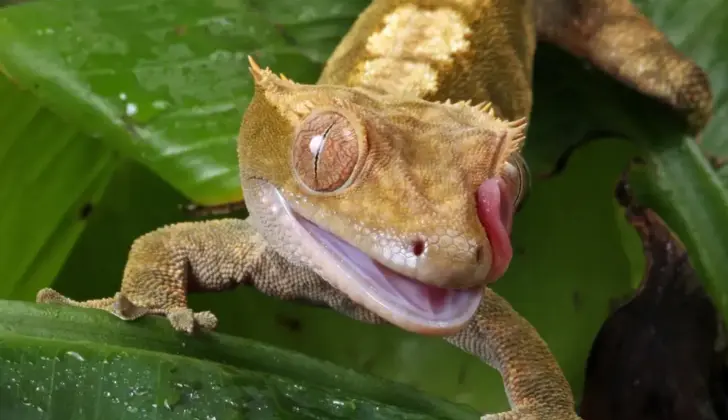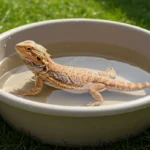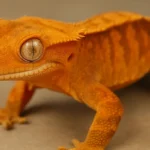The Lilly White Crested Gecko has quickly become one of the most sought-after morphs in the reptile community. Known for its striking appearance, characterized by its unique white and creamy coloration, it has captured the attention of both novice and experienced reptile enthusiasts. In this guide, we will explore everything you need to know about the Lilly White Crested Gecko, from its captivating appearance to its breeding, care, and maintenance requirements.
Whether you’re a seasoned reptile keeper or considering adding a Lilly White Crested Gecko to your collection, this comprehensive guide will help you better understand its care needs and genetic makeup.
Lilly White Crested Gecko Appearance
The Lilly White Crested Gecko stands out with its breathtaking appearance, marked by a remarkable blend of white and creamy tones. This morph is mainly white, with its coloration extending to the tail, which usually displays a solid white shade from base to tip. As the gecko ages, its color may deepen, enhancing its captivating appearance.
-
Eyes: A standout feature of the Lilly White Crested Gecko is its striking silvery-gray eyes.
-
Flanks and Belly: The flank area of the gecko is often covered in raised scales that are typically white or cream. Its belly may also exhibit increasing amounts of white as it matures.
-
Skin Texture: Compared to other Crested Geckos, the Lilly White morph tends to have softer, velvety skin, which further enhances its tactile appeal.
Lilly White Crested Gecko Genetics & Inheritance
The Lilly White Crested Gecko owes its appearance to a unique genetic trait. This trait is co-dominant, meaning it can be passed to offspring, but it’s not always fully dominant in the gene pool. It’s a form of leucism, a genetic mutation that causes a significant reduction in melanin production, which leads to its striking pale appearance.
-
Super Form Issue: When two Lilly White Crested Geckos are bred together, they can produce a “super” form—a completely white gecko. Unfortunately, these super forms often fail to thrive. They lack melanin, which is vital for healthy organ development, leading to developmental issues and sometimes fatal outcomes.
History of the Lilly White Crested Gecko
The Lilly White Crested Gecko was first identified in 2010 by Nick Lumb, a breeder from Lilly Exotics in the United Kingdom. The first gecko with this distinctive coloration was born from a hatchling that stood out from the rest of the group. Nick Lumb then successfully bred this gecko with several females, confirming that the trait was genetic and could be passed on to offspring.
Over the years, breeders worked carefully to propagate the Lilly White morph. However, they discovered that breeding two Lilly Whites together resulted in the problematic “super” form. As a result, breeders avoid pairing two of these morphs to ensure the health of the offspring.
Lilly White Crested Gecko Breeding & Trait Combinations
Breeding Lilly White Crested Geckos offers an opportunity to create geckos with unique and striking features. The gene can be combined with other morphs to produce geckos with various color patterns and looks.
-
Base Color Combinations: Lilly White geckos can be bred with other base colors such as red, yellow, black, and orange, leading to offspring with new and varied color combinations.
-
Genetic Combinations: The Lilly White gene can be combined with other popular morphs like tangerine, lavender, and axanthic. These combinations can result in geckos with unique color intensities and new patterns.
-
Super Dalmatian Influence: Pairing a Lilly White with a Super Dalmatian (heavily spotted morph) might produce geckos that feature a beautiful mix of cream and orange tones, moving away from the usual spotted patterns.
Lilly White Crested Gecko Care Guide
Caring for a Lilly White Crested Gecko is similar to caring for other Crested Geckos, but they do have specific needs due to their unique genetic makeup and appearance. Here’s what you need to know to ensure your gecko remains healthy:
-
Habitat Setup: A 20-gallon tank is ideal for an adult Lilly White Crested Gecko, with proper ventilation for airflow. Select a substrate like sphagnum moss or coconut husk to help retain humidity levels.
-
Temperature & Humidity: Keep the temperature range between 72°F to 80°F, and humidity should range between 60% and 80%. Use a hygrometer to check humidity levels and adjust them accordingly.
-
Lighting: Since Crested Geckos are nocturnal, they don’t require UVB lighting, but offering a low-level 5% UVB bulb may help with overall health.
Feeding the Lilly White Crested Gecko
Lilly White Crested Geckos are omnivores, thriving on a diet that includes a combination of insects, fruits, and commercial food.
-
Insects: These should make up about 75% of their diet. Offer gut-loaded insects like crickets, roaches, and worms.
-
Fruits: The remaining 25% of their diet should include fruits like bananas, mangoes, pears, and peaches.
-
Supplements: Dust the insects with calcium and vitamin D3 to ensure proper nutrition, especially if your gecko is not getting natural sunlight.
Health Maintenance
Like all reptiles, Lilly White Crested Geckos can suffer from common health issues, including mouth rot, respiratory infections, and skin problems caused by parasites. Regular enclosure cleaning and proper temperature and humidity regulation are key to avoiding shedding issues and maintaining overall health.
Lilly White Crested Gecko Breeding
Breeding Lilly White Crested Geckos can be an exciting endeavor, but it requires careful planning to avoid the problematic super form. Here’s what you should understand about the breeding process:
-
Sexual Maturity: Males reach sexual maturity at about 9 months, while females typically mature around 12 months.
-
Clutch Size: A typical clutch consists of two eggs, which usually take 60 to 90 days to hatch.
-
Breeding Environment: Ensure a moist environment with a 4-inch substrate layer in the nest box to aid breeding success.
To avoid producing the super form, it’s best to pair a Lilly White Crested Gecko with a non-Lilly White gecko. This will yield healthy offspring without the risks associated with the super form.
Conclusion
The Lilly White Crested Gecko is a stunning and unique morph that has become a favorite among reptile enthusiasts. With its breathtaking appearance, unique genetics, and proper care, the Lilly White Crested Gecko can make a wonderful pet. Whether you’re looking to add one to your collection or learn more about this fascinating species, understanding its breeding, care, and health needs will help ensure a long, healthy life for your gecko.
If you’re also interested in expanding your knowledge about reptile care, check out our guide on Can Bearded Dragons Eat Rolly Pollies? A Complete Guide for Pet Owners, where we explore another important aspect of reptile diets.






One Comment
Leave a ReplyOne Ping
Pingback:Orange Crested Gecko: A Comprehensive Guide to Morphs, Names, and Care Tips